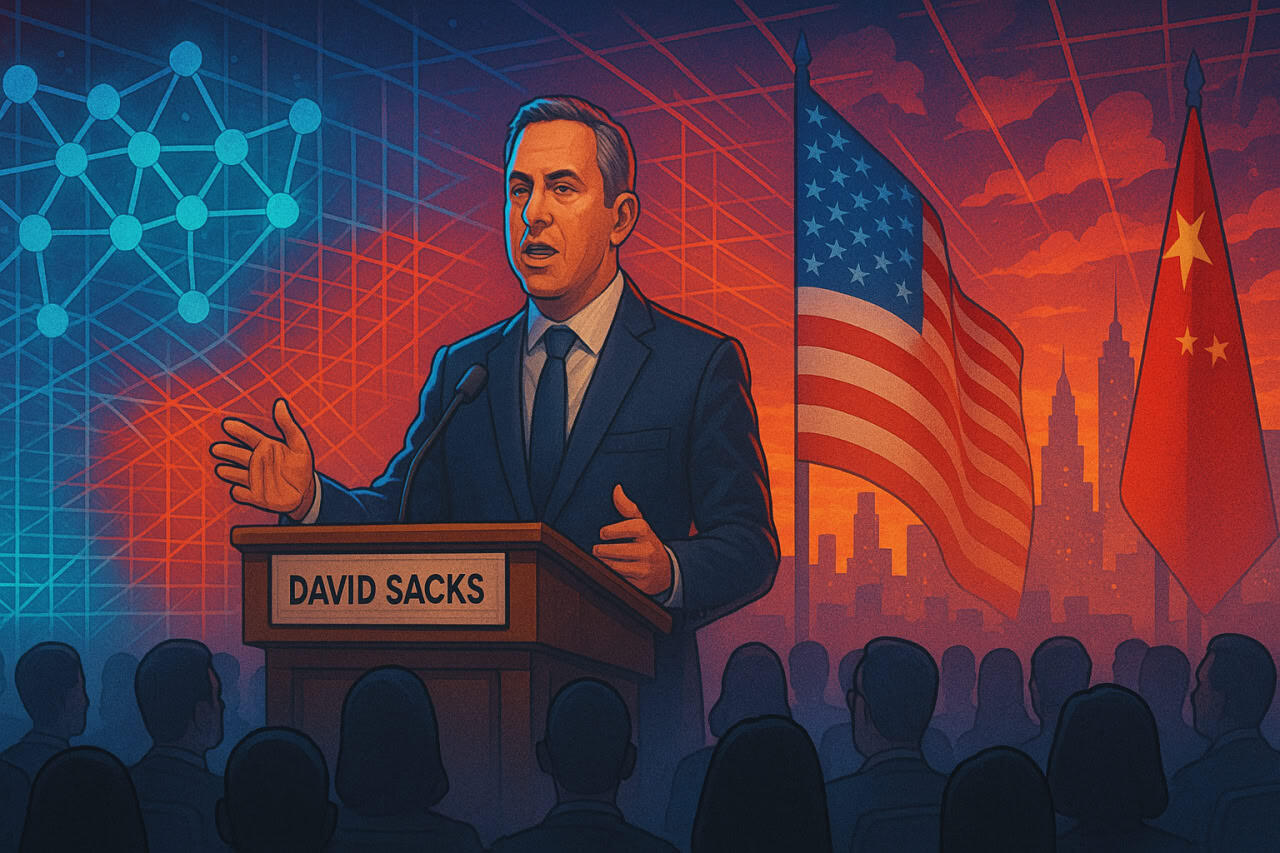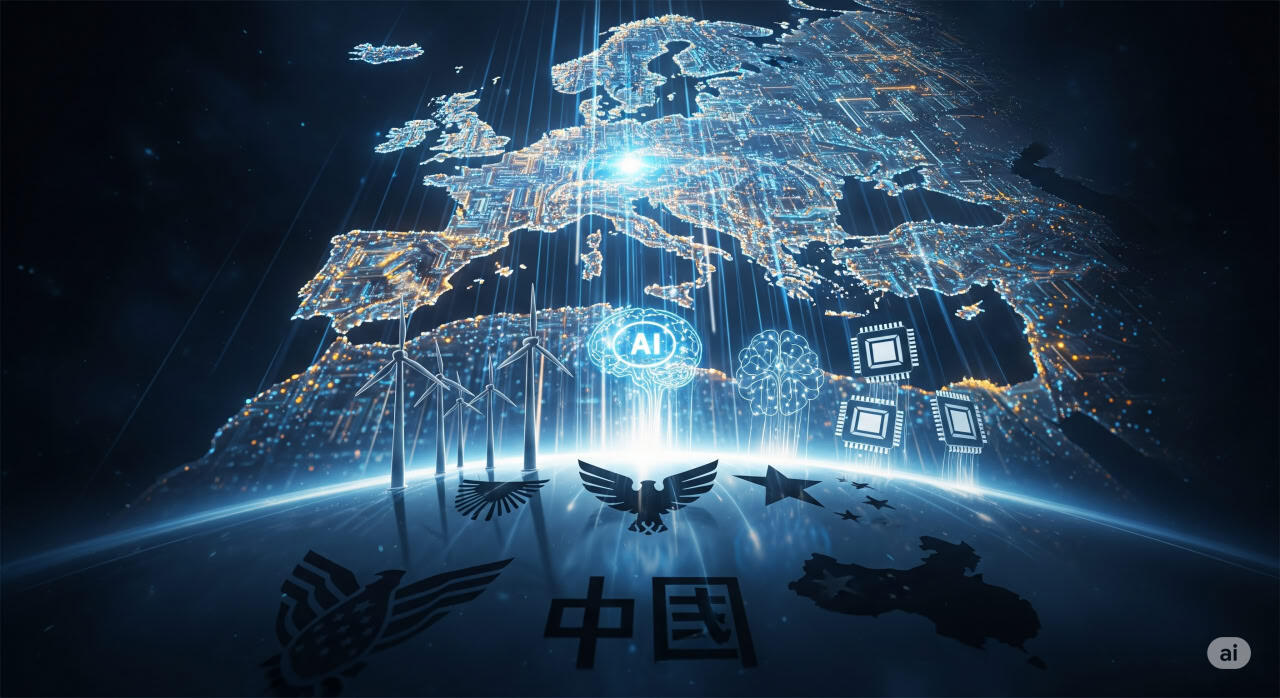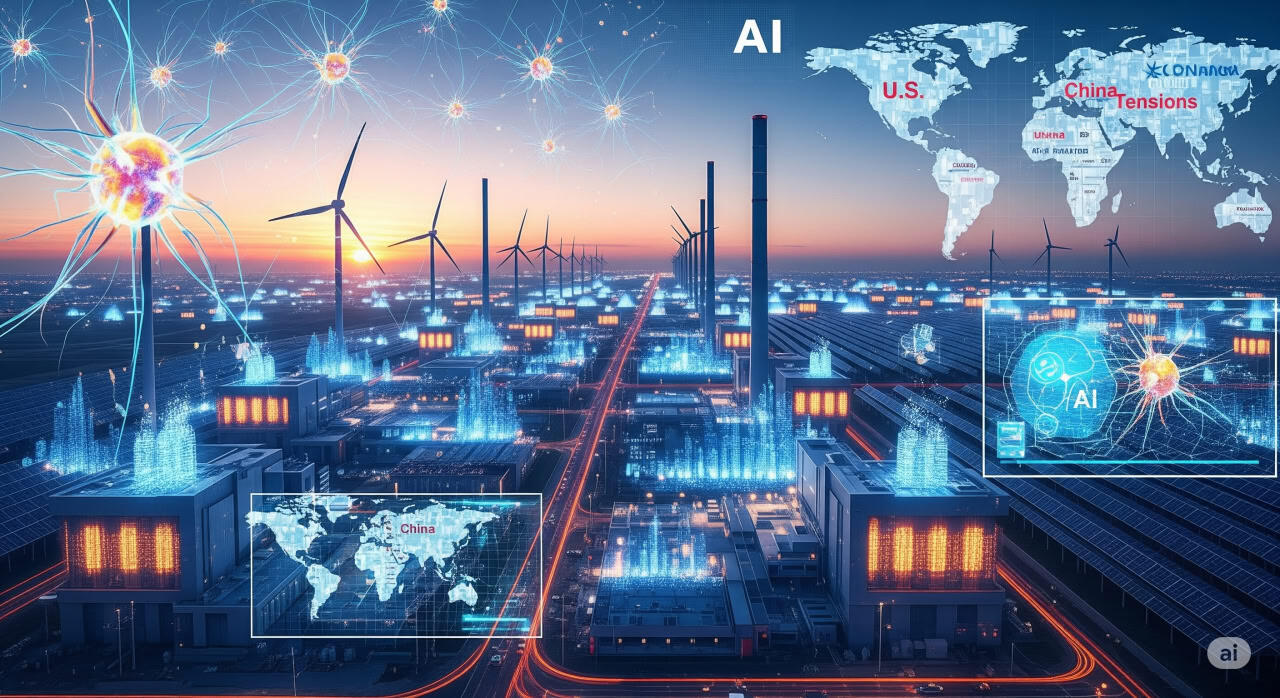Inside Trump’s AI Revolution: CNBC’s Exclusive Interview with White House AI Czar David Sacks

In a pivotal moment for America’s technological future, President Donald Trump’s July 23, 2025, speech at the “Winning the AI Race” Summit in Washington, D.C., echoed the urgency of JFK’s moonshot declaration. Flanked by tech titans and policymakers, Trump unveiled a sweeping AI Action Plan and signed three executive orders aimed at cementing U.S. dominance in artificial intelligence. But what does this mean for the private sector, energy infrastructure, and global competition? In a candid CNBC interview the following day, White House AI and Crypto Czar David Sacks – the Silicon Valley veteran turned policy architect – broke it down, offering insights into how the administration plans to outpace rivals like China while unleashing innovation. As AI reshapes economies and geopolitics in 2025, Sacks’ perspective reveals a blueprint blending deregulation, energy expansion, and strategic exports. Let’s unpack the conversation, weaving in historical context, expert analyses, and the broader implications for businesses and society.
Sacks, a PayPal co-founder and longtime associate of Elon Musk, was appointed to his dual-role position in March 2025, shortly after Trump’s inauguration. His memo to the president that month outlined a framework for AI and crypto leadership, emphasizing private-sector freedom amid regulatory headwinds. By July, with AI investments surpassing $1 trillion globally (per McKinsey’s 2025 mid-year report), Sacks has become the administration’s point man on tech policy. His CNBC appearance, hosted by anchors Andrew Ross Sorkin and Becky Quick, came hot on the heels of Trump’s orders: one preventing “woke AI” biases in federal systems, another promoting U.S. AI tech exports, and a third streamlining infrastructure builds. These moves, part of the 24-page AI Action Plan, signal a shift from the Biden era’s centralized controls to a “let a thousand flowers bloom” approach.
Framing the AI Race: Trump’s Moonshot Moment
Sacks didn’t mince words: Trump’s address was “the most important technology speech by an American president since Kennedy declared we had to win the space race.” The analogy fits – just as the 1960s space program spurred innovations in computing and materials, today’s AI push could redefine global power dynamics. According to the White House’s AI Action Plan, released July 23, 2025, winning the AI race will “usher in a new golden age of human flourishing, economic competitiveness, and national security.”
Background: The U.S.-China AI rivalry intensified post-2020, with Beijing’s “Made in China 2025” initiative pouring billions into chips and models. By mid-2025, China’s DeepSeek-V2 and Qwen2 models trailed U.S. frontrunners like OpenAI’s GPT-5 by mere months, per benchmarks from SuperCLUE. Trump’s plan counters this with an “all-of-the-above” energy strategy, export incentives, and regulatory rollbacks. Sacks highlighted the stack: U.S. leads in models (months ahead), chip design (NVIDIA vs. Huawei: 2 years), and manufacturing (TSMC vs. SMIC: several years).
Analysts agree. Stephen Roach, in a July 2025 Project Syndicate op-ed, warned that U.S. cuts to basic research could let China surge ahead. Yet, Trump’s orders aim to reverse this, tasking the Office of Science and Technology Policy (OSTP) with boosting R&D. A Reuters analysis noted Trump’s export focus: “Supercharge AI sales to allies,” loosening Biden-era chip restrictions while maintaining bans on adversaries.
For the private sector, this means opportunity. Sacks stressed unleashing energy: AI data centers are “power-hungry,” demanding gigawatts. With private investments hitting $500 billion in 2025 (BloombergNEF), the plan slashes permitting times from years to weeks, per the executive order on infrastructure.
The Energy Imperative: Drill, Baby, Drill Meets AI Boom
A core theme in the interview: Energy as AI’s foundation. Sacks echoed Trump’s “drill, baby, drill” mantra, linking it to data center demands. “If you want AI dominance, you’ve got to have energy dominance,” he said. This resonates amid 2025’s energy crunch – U.S. power demand hit records, with data centers projected to consume 12% of electricity by 2028 (U.S. Energy Department).
Context: AI’s thirst is staggering. A May 2025 MIT Technology Review study calculated that generating a 5-second AI video uses 3.4 million joules – 700 times more than traditional computing. Globally, data centers could emit 1.7 gigatons of greenhouse gases by 2030 under current policies (IMF Blog, May 2025). In the U.S., EIA forecasts 4,193 billion kWh in 2025, doubling from 2024, driven by AI.
Sacks addressed concerns: Private sector invests hundreds of billions, but red tape delays. Trump’s order, assigning Lee Zeldin to environmental reforms, aims to streamline. Interviewers raised consumer impacts – rising prices, hurricane priorities favoring data centers. Sacks’ response: “Produce more energy” via natural gas, nuclear, and coal. This “all-of-the-above” echoes Trump’s 2016 promises, now turbocharged for AI.
Expert views: A Guardian report (May 2025) warned AI could claim 49% of data center power by year-end, straining grids. Yet, optimists like ENR’s analysis see a “new course” for energy delivery, with AI driving renewables integration. Cultural clashes: Silicon Valley’s hypergrowth mindset vs. energy’s steady 2% annual expansion. Sacks: Conversations are bridging gaps.
Table: Projected U.S. Data Center Power Demand (BloombergNEF, 2025)
| Year | Demand (GW) | Growth Factor | Key Driver |
|---|---|---|---|
| 2024 | 35 | Baseline | Cloud/Traditional |
| 2025 | 50 | 1.4x | AI Models/Training |
| 2030 | 78 | 2.2x | Widespread Adoption |
| 2035 | 100+ | 2.9x | ASI/Quantum Integration |
This surge could add $1 trillion to utilities by 2030 (Goldman Sachs), but risks blackouts if unaddressed.
Exports and Standards: Building a Global American AI Ecosystem
Sacks championed exports: “We want the whole world using the American tech stack.” Trump’s order eases sales to allies, countering Huawei’s push. Goal: Consolidate around U.S. standards, preventing China’s dominance.
Background: Biden’s 2022-2024 chip bans slowed China, but by July 2025, Beijing proposed a global AI governance group at Shanghai’s WAIC (CNN, July 28). U.S. leads, but gaps narrow – China’s Qwen2 rivals GPT-4o in some tasks (WSJ, July 1).
Sacks: Exports ensure allies align with America. Reuters (July 23): Loosen rules for non-adversaries. Implications: Boost NVIDIA (up 150% YTD), but risks tech leakage. Axios (July 27): “AI’s race in the dark” – no clear finish, but exports could tip scales.
Regulation: Trump warns against “overregulation” via states (1,000+ bills) or international bodies like EU’s DSA. Sacks: Push back for sensible rules, avoiding patchwork.
Copyright Conundrum: Fair Use in the AI Era
A thorny issue: AI training on copyrighted data. Trump: Holders “may just lose out,” but models can’t plagiarize outputs. Sacks clarified: Ingestion for learning isn’t violation if no copying.
Debates rage. U.S. Copyright Office’s May 2025 report: Fair use for training, but lawsuits pending (e.g., authors vs. OpenAI). Skadden (May 15): Office guides to “measured approach.” EFF (June 26): Two courts ruled – one affirmed fair use for training.
Sacks: Impractical deals with millions of holders; China ignores. Philosophical: Humans “ingest” books without issue, but AI scales massively. Dentons (July 28): “Fair use or foul play?” – Courts clarifying.
USC IPTLS (Feb 2025): Outputs resembling works undermine fair use. Sacks hopes Trump’s stance guides courts.
Competition and Innovation: No Punishing Winners
On NVIDIA’s 100% market share: Trump considered breakup but Sacks defends: “We don’t punish success.” Jensen Huang’s 30-year GPU vision earned it.
Acqui-hires trend (regulators block mergers): Sacks favors competition. “Ferocious” at models level; startups challenge NVIDIA.
Analysis: Wiley (May 16): Trump’s orders promote innovation. Workforce Bulletin (July): Action Plan for leadership.
Conclusion: A High-Stakes Bet on American Ingenuity
David Sacks’ CNBC interview illuminates Trump’s AI gamble: Deregulate, energize, export – win the race. Amid U.S.-China tensions, energy crunches, and ethical debates, this vision could spark a “golden age” or pitfalls. For businesses: Opportunities in infrastructure, exports. Society: Balance innovation with safeguards.
As Sacks said, “Competition brings out the best.” In 2025’s AI boom, America’s future hangs in the balance. What role will you play?




Легко и быстро забронировать отель в сервисе онлайн-бронирования. Новые технологии дают возможность быстро найти и забронировать нужный отель.
Забронировать отель в сервисе бронирования отелей
Подбор отеля играет значительную роль в организации вашей поездки. При выборе отеля следует обращать внимание на его местоположение, предлагаемые услуги и мнения клиентов.
После подбора отеля необходимо проверить условия его бронирования. Не забывайте ознакомиться с условиями отмены бронирования, предоплаты и сроков проживания.
В завершение обязательно подтвердите бронь и запишите важную информацию. Внимание к деталям поможет избежать неприятных ситуаций при заселении.